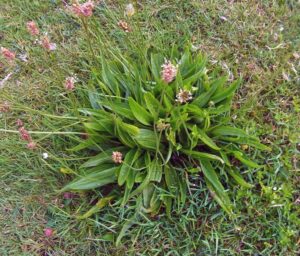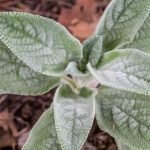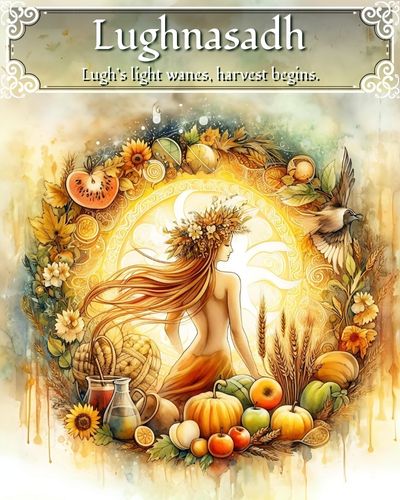
Approx. Reading time: About 6 Minutes

Introduction
Foraging Dandelions: A Guide to Identifying, Harvesting, and Using this Common Plant
Dandelions are a common plant that can be found in many parts of the world. Often considered a nuisance weed, dandelions are edible and have many health benefits. In this article, we will explore the history of dandelions, characteristics of them, how to identify them, where they grow, home remedies using the plant, and some tips for foraging.

History
Dandelions have a rich history of use in traditional medicine and folklore. The plant has been used for thousands of years for a variety of purposes, ranging from treating ailments to divination. In ancient times, dandelions were revered for their medicinal properties and were used to treat a wide range of conditions, including digestive issues, skin irritations, and liver problems. The plant was also believed to have magical properties and was used in divination and love spells.
In medieval Europe, dandelions were a common sight in monastery gardens, where they were grown for their medicinal properties. The plant was also used in traditional Chinese medicine, where it was believed to promote digestion, reduce inflammation, and detoxify the body. Dandelions were also used by Native American tribes, who used the plant for food, medicine, and in religious ceremonies.
During World War II, dandelions played an important role in food production, as they were used to supplement scarce food supplies in Europe. The plant was grown for its edible leaves, which were used in salads and soups, and the roots were roasted and used as a coffee substitute.
Today, dandelions continue to be used for their health benefits and culinary uses. The plant is a rich source of vitamins and minerals, including vitamins A, C, and K, iron, calcium, and potassium. Dandelion leaves are a common ingredient in salads and can be used in place of spinach or other greens. The roots of the plant are also used in teas and tinctures, and the flowers can be used to make wine or infused into oil for use in cooking.
What do Dandelions Look Like?
Dandelions are a perennial plant that typically grows to a height of about 5 to 40 cm. The leaves of the plant are long and narrow with jagged edges that are toothed. The leaves grow in a rosette pattern at the base of the plant. The stem of the plant is hollow and typically grows a single yellow flower at the top. The flower has petals that are pointed and are arranged in a circle around a central disk.
Dandelions are a perennial plant that typically grows to a height of about 5 to 40 cm. The leaves of the plant are long and narrow with jagged edges that are toothed. The leaves grow in a rosette pattern at the base of the plant. The stem of the plant is hollow and typically grows a single yellow flower at the top. The flower has petals that are pointed and are arranged in a circle around a central disk.
The plant’s bright yellow flowers and white puffball seeds have led to a variety of interpretations and meanings. In some cultures, dandelions are seen as a symbol of joy, happiness, and hope. The plant’s resilience and ability to thrive in difficult conditions have led to it being associated with perseverance and strength.
In other cultures, dandelions are seen as a symbol of transformation and new beginnings. The plant’s ability to grow in disturbed or neglected soil has led to it being associated with rebirth and renewal. Dandelions are also believed to have divinatory properties and have been used in love spells and fortune-telling.
In modern times, dandelions have also become a symbol of environmentalism and resistance. The plant’s resilience and ability to grow in even the most challenging conditions have led to it being embraced by activists and gardeners alike as a symbol of hope and resilience in the face of adversity.
How to Identify Dandelions
Dandelions are a common and easily recognizable plant that can be found in a variety of environments. When foraging for dandelions, it is important to correctly identify the plant to avoid any potential mistakes. Dandelions typically have bright yellow flowers with pointed petals that form a circle. The leaves of the plant are typically toothed and can range from four to six inches in length. Another characteristic of dandelions is their hollow stem, which exudes a milky sap when broken. In addition to the yellow flowers, dandelions produce a fluffy white seed head that is easily dispersed by the wind. These distinctive features make dandelions easy to identify in the wild.
One helpful tip for identifying dandelions is to look for them in open areas such as lawns, fields, and meadows. Dandelions thrive in areas with plenty of sunlight, and their bright yellow flowers are often the first sign of spring in these areas. Additionally, dandelions have a long growing season, and their leaves can be harvested at any time during the year. When harvesting dandelion leaves, it is important to choose leaves that are young and tender, as older leaves can be tough and bitter. With their distinct appearance and wide availability, dandelions are an excellent plant for foraging and can be used in a variety of culinary applications.
Where Do Dandelions Grow?
Dandelions are a versatile and hardy plant that can grow in a wide range of environments, including fields, lawns, gardens, and even cracks in pavement. They thrive in areas with plenty of sunlight and well-drained soil and can even grow in poor soil conditions. Dandelions are native to Europe and Asia but have since spread throughout much of the world due to their adaptability and ability to thrive in a variety of climates.
The life cycle of a dandelion can vary depending on environmental factors such as temperature and soil conditions, but on average it takes around 200 days from start to finish. Dandelions begin as a seed, which can be carried by the wind or animals to new locations. Once the seed takes root, the dandelion will produce a rosette of leaves and eventually a flower stem. The yellow flowers are pollinated by bees and other insects, and eventually give way to the familiar white puffball of seeds that are easily dispersed by the wind. The seeds then take root, and the cycle begins again. Due to their rapid growth and ability to spread quickly, dandelions can be seen throughout much of the growing season in many parts of the world.
Home Remedies Using Dandelions

In addition to tea, dandelion roots can be roasted and ground to make a caffeine-free coffee substitute. The roasted roots have a similar flavor to coffee and can be brewed using a French press or drip coffee maker. Dandelion root coffee is rich in antioxidants and is believed to have a few health benefits, including reducing inflammation and improving liver function.
Dandelion greens can also be used in a variety of dishes, such as salads, soups, and stir-fries. The leaves are a good source of vitamins A, C, and K, as well as minerals such as calcium and potassium. Dandelion greens are also believed to have anti-inflammatory properties and can help support liver health. Overall, dandelions are a versatile and useful plant with several potential health benefits when used in home remedies.
Foraging Tips
When foraging for dandelions, it is important to be mindful of where you are harvesting the plant. Avoid areas that have been treated with pesticides or herbicides, as these chemicals can be harmful if ingested. It is also important to properly identify the plant to avoid harvesting any toxic lookalikes.
When harvesting dandelions, it is best to gather the leaves and flowers when they are young and tender, as they can become bitter and tough as they mature. The roots of the plant can be harvested in the fall when the plant has gone dormant. To harvest the roots, dig up the entire plant and carefully remove the root from the soil.
Conclusion
Dandelions are a versatile and beneficial plant that can be foraged for a variety of uses. Whether you are harvesting them for food, medicine, or simply as a hobby, it is important to properly identify the plant and be mindful of where you are harvesting it from. With a little bit of knowledge and caution, you can enjoy the many benefits that dandelions have to offer.
Disclaimer: Foraging for wild food can be a rewarding and enjoyable activity, but it can also be dangerous. It is important to note that not all plants are safe to eat, and misidentification of plants can lead to serious illness or even death. Additionally, wild food can be contaminated with pollutants or harmful substances, which can also pose health risks. Therefore, it is crucial to exercise caution and do proper research before consuming any wild food. It is recommended to learn from experienced foragers or take a foraging class before attempting to forage on your own. Always properly identify the plant and verify with multiple reliable sources before consuming. If you have any doubts, it is best to err on the side of caution and avoid consuming the plant.















